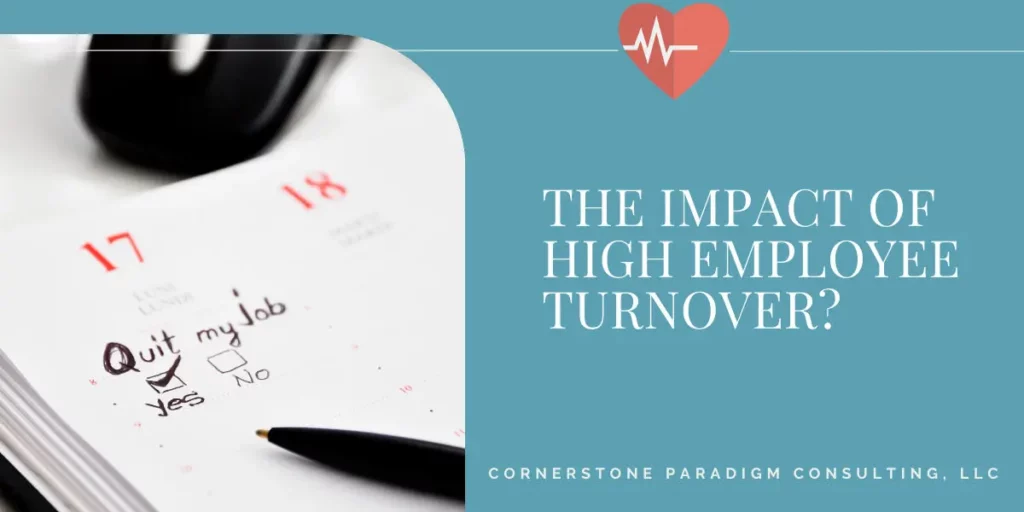It typically costs six to nine months of an employee’s salary to replace them — meaning that losing that middle manager who is paid $60k a year could result in a hit of $30k. Yet as shocking as this might sound, it only skims the surface of the potential impact high turnover has.
If you’ve observed that your organization is encountering this particular issue, and you find yourself contemplating the extent of its impact or pondering the appropriate course of action to address it, rest assured that you have landed in the right place.
The impact of high turnover
As mentioned, the surface-level impact of high turnover is that it affects your bottom line. Yet this happens through multiple channels, and many business owners or managers don’t realize how harmful it can be. Here’s what you need to look out for.
The cost of hiring and onboarding
First of all, there are the costs of interviewing someone — around $4,000 per hire. In most cases, it may take a month or more to find the right person (although there’s some variation between industries), with it taking 41 days to fill a position on average.
On one hand, this means lower output during those 41 days, which hurts revenue. But it also means that crucial time and resources are spent on making that hire. Often, other team members will have to spend hours wading through resumes or conducting interviews instead of doing their usual work. The problem isn’t much better if you outsource the task since you’ll have to hire a recruiter and pay their fees (and most leaders want to be somewhat involved in the process anyway).
Reduced productivity and quality
This situation can lead to decreased productivity and a decline in the quality of products or services. Having inexperienced or overburdened staff can result in a poorer customer experience and more errors in products or software, leading to customer frustration and their potential shift to another provider.
Furthermore, the issue persists even after a new hire is brought in. It requires time to onboard and train a new employee to effectively perform their role and make a positive impact on the organization. All the progress achieved is reset when a new hire is necessary, restarting the process from scratch. This constant cycle can greatly hinder the growth and progress of a company.
Negative impact on company culture
High turnover also has a negative effect on the workplace culture. Constantly losing employees can create a sense of instability, making it difficult to foster a positive and cohesive team dynamic. It can also lead to lower morale among remaining employees, as they feel overworked and undervalued in an environment where their coworkers are constantly leaving.
Additionally, high turnover can also damage the reputation of a company, making it difficult to attract and retain top talent. Potential employees may see the high turnover rate as a red flag and opt to work for a more stable organization instead.
Poor morale and workplace culture
A knock-on effect of this can be that the remaining employees feel unhappy. They have to pick up the slack, meaning they might have to do two peoples’ jobs or put in overtime, making them feel resentful. All of this hurts morale and deteriorates workplace culture, which can then be contagious even for new hires.
As you can probably see by now, this situation can create a challenging and exhausting cycle where high turnover rates lead to decreased employee job satisfaction, ultimately prompting them to resign and exacerbating the turnover issue. With each new hire, there is a disruption to the established process, potentially impacting the experience of your customers as each new employee brings their unique perspective and approach to the role.
However, it’s important to shift the focus away from the negative aspects. So, what proactive steps can be taken to address this persistent challenge effectively?
How to reduce high turnover
Unless you’re incredibly lucky, employees will inevitably leave your organization from time to time. Maybe they’ll want to move to a different city for new adventures, decide to quit work to become a full-time parent and immerse themselves in family life, or even gracefully retire after years of dedicated service — not to mention those seeking a pivot in their career paths. And no matter how well you treat your employees or how many enticing perks you offer, the ebb and flow of personnel changes will persist. However, if you find that you can’t seem to retain team members for more than a year or two, it may signal an underlying issue that warrants closer examination.
In that case, your first port of call should be identifying the problem. Common causes of employee turnover include:
- Stress – a difficult job is a stressful job.
- Low job or work satisfaction – not allowing your team to do stimulating work.
- Poor leadership – Leaders need to continue to work on their skills as leaders.
- Unsatisfactory compensation – paying below market rate or someone’s value.
- Disagreements with coworkers – sometimes we call this tribe vibe where there is one person singled out from the pack.
- Toxic workplace culture – this can show up in many forms.
- Boring job role- the right people in the wrong roles or underutilizing your people.
You can try strategies like sending out an anonymous survey to your team asking for their honest opinions on all of the above. And make sure you act on the feedback too —after they take the survey they want action, inaction will feel like empty calories and will work against you.
In certain instances, the issue could stem from challenges encountered during the hiring process. Therefore, it is valuable to delve deeper into your strategy. Consider assessing the accuracy of your job descriptions, ensuring fairness in your interview procedures, and evaluating the effectiveness of your advertising placement. These steps can help identify areas for improvement and enhance your overall recruitment approach.
At times, navigating the need for impartiality while identifying potential deviations from the intended path can pose a significant challenge. In these situations, seeking the expertise of a consultant could prove advantageous. A consultant can offer novel insights and viewpoints when assessing your operational procedures and the underlying organizational framework, thereby enhancing your ability to address any concerns effectively.
Tackle that turnover rate
If you’re trapped in the cycle of high turnover, it can feel overwhelming. The constant need to recruit new employees might leave you with little room to evaluate and refine your existing processes thoroughly. To break free from this cycle, considering the expertise of a qualified consultant could prove to be a valuable solution. Their insights and recommendations can help streamline your operations and foster a more stable and productive work environment. By addressing the root causes of high turnover, you can improve employee satisfaction, boost morale, and create a positive workplace culture that attracts and retains top talent. So, don’t let high turnover rates continue to negatively impact your organization. Take proactive steps to address the issue and create a more stable and thriving workplace. With careful attention and intentional actions, it is possible to reduce high turnover and create a positive and supportive work environment for your employees. Remember, happy and satisfied employees are more likely to stay with the company, leading to long-term benefits for both the organization and its workforce.
In conclusion, high turnover can have far-reaching consequences that extend beyond just filling vacant positions. It can damage workplace culture, lower morale, impact customer experience, and create a costly and time-consuming cycle of constantly hiring and training new employees. By identifying the root causes of high turnover and taking proactive steps to address them, organizations can reduce turnover rates and create a more stable and productive work environment for their employees.
We specialize in analyzing your business processes to identify the root cause of problems. We’ll analyze your people, processes, technology, and customer service to find out why you’re experiencing high turnover — and help you to solve the issue. Get in contact to find out more. Don’t let high turnover rates continue to negatively impact your organization. Take proactive steps to address the issue and create a more stable and thriving workplace. With careful attention and intentional actions, it is possible to reduce high turnover and create a positive and supportive work environment for your employees. Happy and content employees are more likely to remain loyal to the company, benefiting both the organization and its workforce in the long run. Don’t allow high turnover rates to persist and harm your organization. Take proactive measures to tackle this issue and cultivate a stable and flourishing workplace. By giving focused attention and taking deliberate actions, it’s feasible to diminish high turnover rates and establish a positive and supportive work environment for your employees. Remember, the key to a thriving workplace lies in the happiness and satisfaction of your employees.







